Current Sheet Antenna Array and 5G: Challenges, Recent Trends, Developments, and Future Directions
- PMID: 35591019
- PMCID: PMC9102463
- DOI: 10.3390/s22093329
Current Sheet Antenna Array and 5G: Challenges, Recent Trends, Developments, and Future Directions
Abstract
Designing an ultra-wideband array antenna for fifth generation (5G) is challenging for the antenna designing community because of the highly fragmented electromagnetic spectrum. To overcome bandwidth limitations, several millimeter-wave bands for 5G and beyond applications are considered; as a result, many antenna arrays have been proposed during the past decades. This paper aims to explore recent developments and techniques regarding a specific type of phased array antenna used in 5G applications, called current sheet array (CSA). CSA consists of capacitively coupled elements placed over a ground plane, with mutual coupling intentionally introduced in a controlled manner between the elements. CSA concept evolved and led to the realization of new array antennas with multiple octaves of bandwidth. In this review article, we provide a comprehensive overview of the existing works in this line of research. We analyze and discuss various aspects of the proposed array antennas with the wideband and wide-scan operation. Additionally, we discuss the significance of the phased array antenna in 5G communication. Moreover, we describe the current research challenges and future directions for CSA-based phased array antennas.
Keywords: 5G; antenna array; current sheet array (CSA); millimeter-wave; ultra-wideband (UWB).
Conflict of interest statement
The authors declare no conflict of interest.
Figures



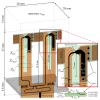



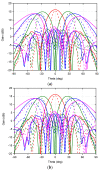
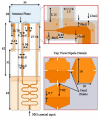

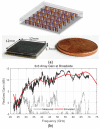

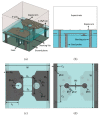







References
-
- Pi Z., Khan F. An Introduction to Millimeter-Wave Mobile Broadband Systems. IEEE Commun. Mag. 2011;49:101–107. doi: 10.1109/MCOM.2011.5783993. - DOI
-
- Rappaport T.S., Gutierrez F., Ben-Dor E., Murdock J.N., Qiao Y., Tamir J.I. Broadband Millimeter-Wave Propagation Measurements and Models Using Adaptive-Beam Antennas for Outdoor Urban Cellular Communications. IEEE Trans. Antennas Propag. 2013;61:1850–1859. doi: 10.1109/TAP.2012.2235056. - DOI
-
- Marcus M.J. 5G and «iMT for 2020 and Beyond» [Spectrum Policy and Regulatory Issues] IEEE Wirel. Commun. 2015;22:2–3. doi: 10.1109/MWC.2015.7224717. - DOI
-
- Qiao J., Shen X., Mark J., Shen Q., He Y., Lei L. Enabling Device-to-Device Communications in Millimeter-Wave 5G Cellular Networks. IEEE Commun. Mag. 2015;53:209–215. doi: 10.1109/MCOM.2015.7010536. - DOI
-
- Wang C.X., Haider F., Gao X., You X.H., Yang Y., Yuan D., Aggoune H.M., Haas H., Fletcher S., Hepsaydir E. Cellular Architecture and Key Technologies for 5G Wireless Communication Networks. IEEE Commun. Mag. 2014;52:122–130. doi: 10.1109/MCOM.2014.6736752. - DOI
Publication types
LinkOut - more resources
Full Text Sources
Miscellaneous

